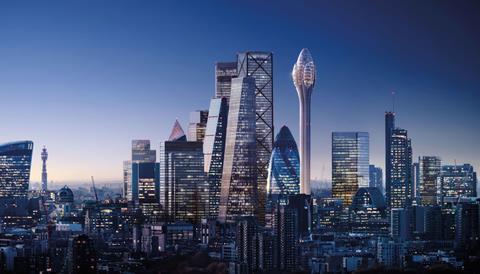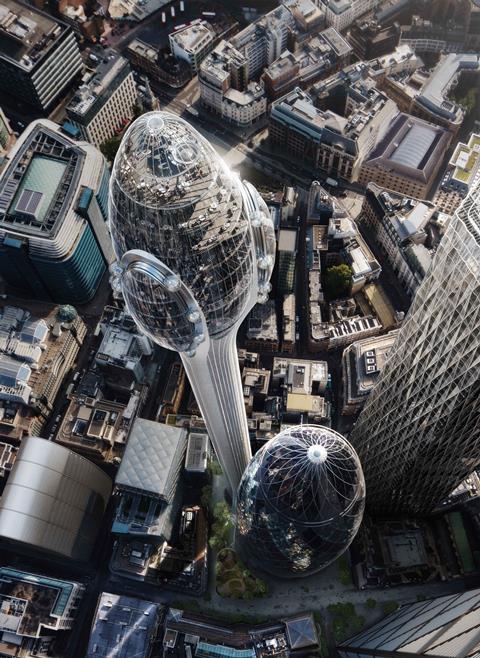But scheme likely to face public inquiry

The City of London’s planning committee has given Foster & Partners’ controversial Tulip tourist attraction the green light.
At a three-hour planning hearing this morning, the scheme was OK’d despite a string of objections from heritage groups including Historic England and Tower of London manager Historic Royal Palaces. London mayor Sadiq Khan has also objected.
Despite the weight of opposition, the City’s planning committee gave it the all clear by 18 votes to seven.
But it seems certain the scheme will face further planning hurdles in the coming months.
Last month, the chair of the City’s planning and transportation committee Chris Hayward, who voted for the scheme at today’s hearing, told BD he expected that any decision to approve the Tulip would be called in for further scrutiny at a public inquiry presided over by a planning inspector.
Planners at the City had last week recommended the corporation’s decision makers approve the 305m scheme, arguing that its advantages outweigh its impacts and that its “bold and striking” design is iconic.
>> Also read: The Tulip: Will it ever be built?
The scheme will be built at a site next door to Fosters’ Gherkin, which is also owned by Jacob J Safra and which kick-started the slew of tall towers in the so-called eastern cluster when it was completed 15 years ago.
Norman Foster did not appear before the committee but Grant Brooker, the practice’s senior executive partner, read a statement on his behalf. In it the architect accepted the Tulip was “inevitably controversial” but argued that it also had the potential to be a global symbol for the capital. (See box below for full statement.)
>> Also read: From halo to horticulture: Evolution of Fosters’ Tulip revealed
The City’s chief planning officer, Annie Hampson, said she believed the Tulip provided a “striking building marking the City” and that it had an “interesting relationship” with the Gherkin, which won the Stirling Prize in 2004.
Several committee members praised the Tulip’s proposed education offer, which dedicates a lower floor of its 12-storey observation area to facilities for pupils at London state schools, and now anticipates 40,000 visits a year.
Fewer voices rued the impact the tower will have on the London skyline, although one described the proposal as “a fairground ride” while Graeme Harrower “commended it” to Las Vegas, but not London.
Committee chair Chris Hayward said approving the Tulip was “a once in a lifetime opportunity” for his colleagues.
Last year Safra suggested construction could start in 2020 and be completed in 2025.

Statement from Norman Foster to the City’s planning and transportation committee:
The owner of the Gherkin approached me last year to ask how, as a world symbol of London, could we bring to it a public dimension.
It proved impossible to retrofit the tower so we proposed a companion structure, totally devoted to the public, with a generous educational dimension for younger generations.
No such facility exists in London available for citizens and visitors alike.
Aside from being a symbol in its own right, it will add to the cluster of tall buildings that mark the “city within the city” .
Socially, it will broaden the activities beyond its domain of business.
Of course, like the Gherkin itself 20 years ago, it is inevitably controversial.
But like the Gherkin itself it has the same potential to be a symbol far beyond its host city.
Thank you.


















12 Readers' comments